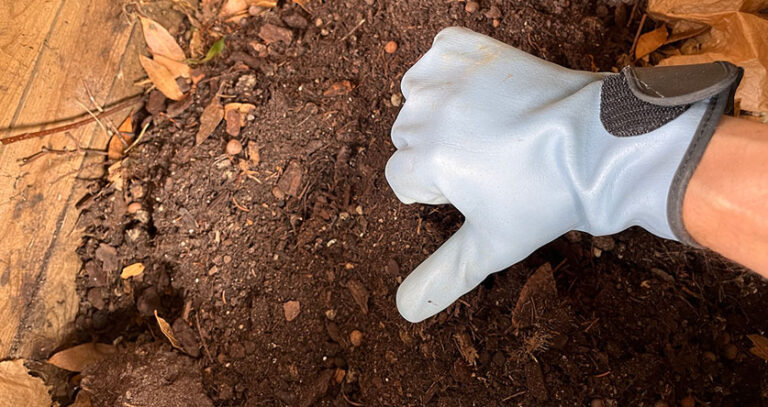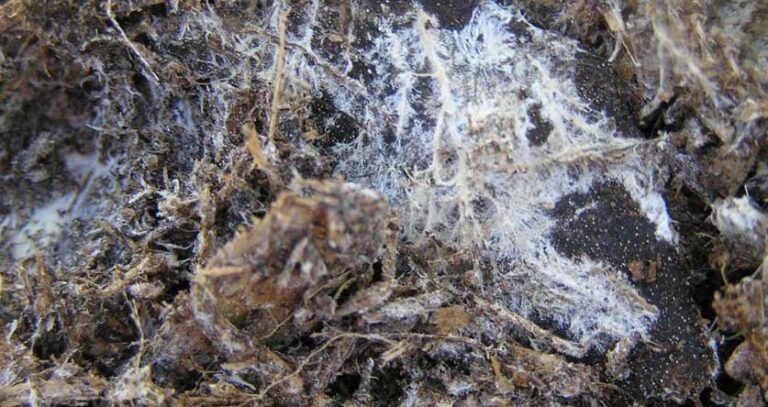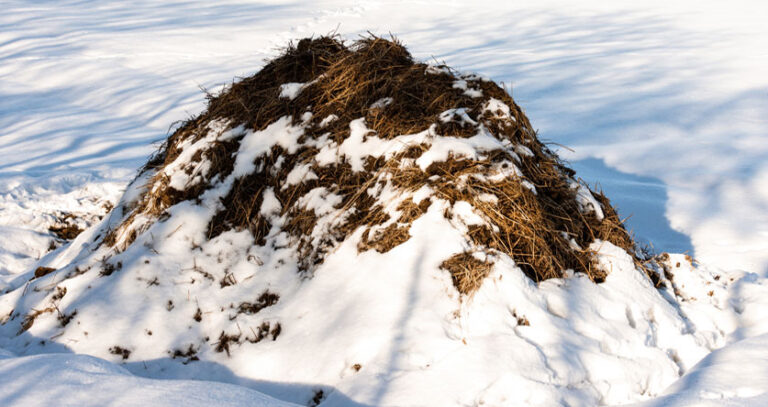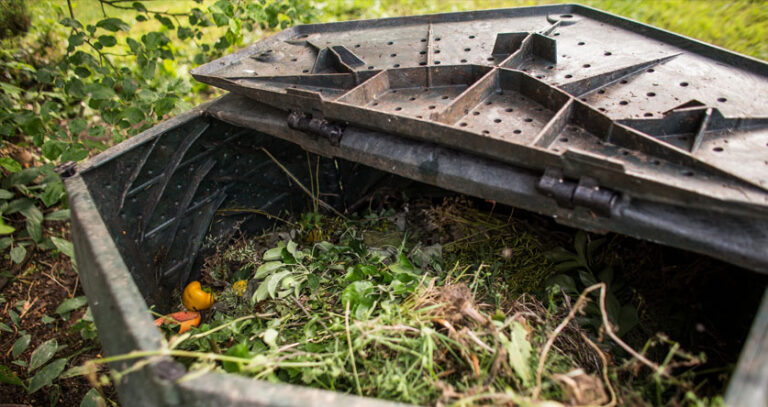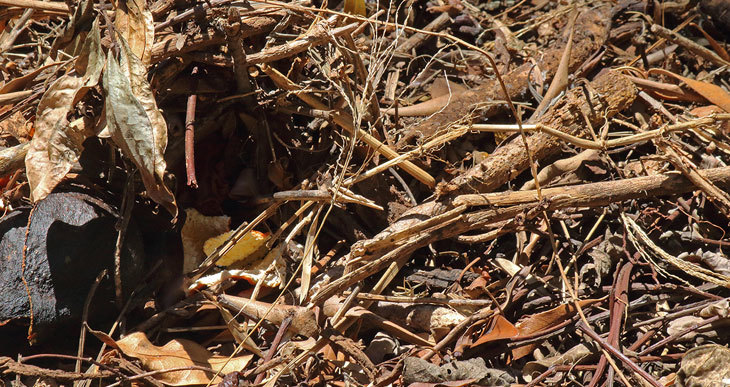Does Compost Attract Rats? (The Ultimate Rat Proof Composting Guide)

Imagine having rodents scurrying around your feet every time you deposit kitchen scraps! And hearing the pitter-patter of tiny feet around your compost?
It should be said that rat infestations in compost are pretty rare, so don’t let this put you off composting.
But compost can indeed attract rats and other furry mammals from time to time.
So, what can you do about these furry visitors if you find them in your compost bin one day? And what are the problems for you and your compost if they make their home there?
You can take several steps to keep rats, mice, and other rodents away from your composting efforts.
Keep reading to discover what to do about rodents in your compost and how to protect your bins from these pesky critters!
Does garden compost attract rats?
In certain situations, compost can attract rodents like rats. Rats and mice are attracted by compost’s secure, warm environment as a place to shelter. Plus, the kitchen scraps and other waste provide a ready food source to help raise offspring.
I once had a problem with rats during a nasty winter. Understandably, the rodents thought my compost bin was a snug location to escape the cold. And during the winter season, I spent less time visiting the compost, which meant they were relatively undisturbed.
Suppose you do find rats or mice nesting in your compost during the wintertime. In that case, they will probably skedaddle when the temperatures warm up!
Nevertheless, rats can become problematic at any time of the year. And in certain suburban and urban areas, they may cause significant damage as they try to get into buildings or gardens in search of food.
Do compost piles attract rats?
The potential food and shelter offered by compost heaps make them attractive to rat populations.
Piles and heaps are the most vulnerable composing methods easily accessible to rats. Open outdoor piles are easily accessible, so rats can jump right in. Some people surround their piles with an enclosure to keep things neat. The more enclosed your piles, the less access they will have.
Do compost bins attract mice and rats?
Bins are relatively closed containers, but unfortunately, that doesn’t stop them from attracting rats and mice.
The bottom of the bin is open to the ground, which means rodents can bury under it to get in. And the dark, warm interior is an ideal place for them to live and raise their young.
Keep the lid on your compost bin properly secured to deter furry visitors from sneaking into your compost while you’re not looking!
I’ll give you more tips below about deterring rats in bins…
Do compost tumblers attract rats?
Tumblers are the least accessible to rats. This method keeps the composting drum suspended off the ground, which helps isolate the compost. They are also entirely closed, making them pretty secure.
And I’m not sure the rats would enjoy rolling around in the tumbler every time you give it a spin!
Are rats in compost bad?
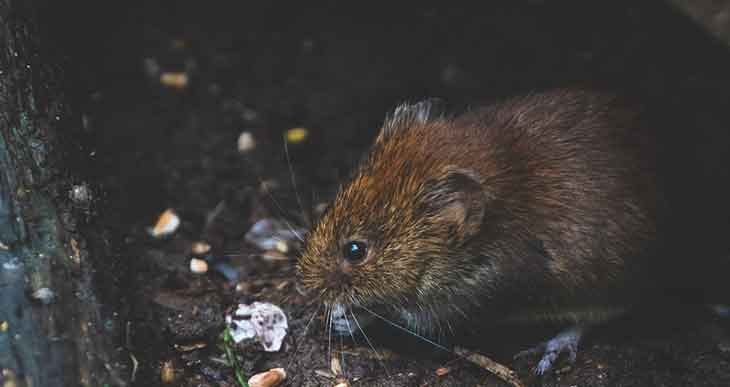
Having rats in your compost bin is bad news. They spread diseases, and their feces can transmit harmful pathogens (for example, Weil’s disease can be contracted from rats’ urine). This can also damage some plants if you use the compost afterward.
- Rats in the compost can spread disease
- Rats can bite or scratch, which can cause infection
- They can contaminate your compost with their droppings and urine
- They consume your compost material!
- Rodents can also cause damage to your composting bin by chewing on it or making holes in it.
If you find a rat’s nest in your compost, do not use rat-infested compost on vegetables or food crops – only on non-edible plants. And make sure you wear gloves. (Amazon)
All of these problems make it essential to take steps to keep rats away from your composting bins!
What attracts rats to compost?
The main attractions of compost for rats are shelter and food. Compost materials make good bedding. Rats are omnivorous and eat just about anything, such as food waste in compost.
The undisturbed nesting conditions and supply of kitchen scraps are like a hotel with room service for rats.
It’s not surprising they would want to move in!
Do rats nest in compost?
Yes, rats find compost very inviting as a place to nest.
Compost piles or bins provide shelter from danger, making it an appealing place to raise offspring. And compost provides decent insulation from the cold.
For example, suppose your compost is too dry. In that case, it makes conditions even more comfortable for mice or rats because the insulation value will be higher.
Furthermore, an active compost pile generates heat. It’s like having a little compost-based radiator in your yard – perfect for keeping rats warm!
Food is the other main draw for rats and mice. They are attracted to the scraps from your kitchen and other plant material. This provides a ready source of food that helps them survive and raise their young.
Do rats eat compost?
Rats are not attracted to compost because they want to eat the compost itself. Instead, the added food scraps attract rodents and other scavengers, particularly if you add leftovers like cooked food, fish, or meat.
Does burying food waste keep rats from the compost?
If you compost food waste, it is good practice to bury it deep in a pile. However, even this might not be enough to discourage a ravenous rat.
Add a thick layer of dry carbon material like straw or wood chips whenever you drop food waste in your composter. This will act as a filter to reduce tempting odors.
How to keep rats away from compost
Suppose you’re afraid of a rat infestation, or you recently rid yourself of unwanted rodents. In that case, you can take various precautions to keep rats away from your compost in the future.
So… How do you make sure composting doesn’t attract rats…
Here are some tips about how to keep rats away from your compost:
- Don’t add meat and fish leftovers. This is probably the number one rule in your efforts to deter rats.
- Keep food scraps in the freezer until you’re ready to add them to the compost pile. This could help keep pests away from the food and out of your compost.
- Choose a busy location. Put your compost in a frequently visited site or in the middle of your garden beds. The open surroundings make it more difficult for rats to circulate unnoticed. They don’t like open spaces and prefer to remain undercover and near edges.
- Keep compost away from a water source. Rats need this to survive.
- Use a more open wooden bin. For example, a wooden pallet bin lets in more light and air, making a less appealing drafty open environment.
- Use a tumbler. This is probably the safest method for composting if you want to avoid rats.
- Get a cat! Just kidding… But if you do have a cat, you could try adding used cat litter to your compost. Rats hate the smell of cats’ urine. However, this technique requires removing all cat feces because this can contain harmful pathogens.
Animal proof compost bin
You could consider investing in an animal-proof compost bin. Unfortunately, not all models are ideal for this metal bins are impervious to rats because they can’t chew through them!
The Jora compost tumbler is a good example (Amazon). Its metal drum is wholly sealed and raised off the ground.
How to compost without attracting rats…
Here are a few tips about composting to avoid rats and mice visiting your compost:
- Don’t leave scraps on the ground around the composter.
- Locate your compost near a path where people move around. Rats prefer peace and quiet (like us!)
- A good turning schedule will disturb compost regularly. This will make it less inviting for rats. It also creates active compost that breaks down food waste quicker, meaning it won’t be available for rodents.
- Smaller chopped-up scraps will break down quicker.
- Bury scraps thick layers of dryer materials like dried leaves and a spadeful of soil. This acts as a bio-filter to reduce odors.
- Keeping compost damp helps deters rats. It’s not so warm and dry for sheltering. (Don’t go over 40- 60% moisture content and use a moisture meter like this to monitor)
- Don’t leave clutter around the bins. Clear the area around the bin and rake up dead leaves, etc. This removes potential rat runs.
If you think the food scraps are the main problem, try another method such as pit or trench composting. You could also use an in-ground compost system like a buried trash can food digester.
Alternatively, consider buying a good compost tumbler. For example, the Mantis back porch tumbler is a very effective model and is well-sealed!
How to get rid of rats in compost
Rats will not give up their nest in a compost bin without a struggle. So one of the most effective ways to get rid of rodents in compost is to move it to a new location.
Have rats taken up residence in your cozy compost pile?
Above all, rats are looking for a safe, sheltered place to nest. Moving compost takes away that essential requirement.
Afterward, you can take further precautions to avoid rats returning to your compost.
How to get rats out of your compost bin
Rats often dig tunnels under a compost pile or bin to gain easy access without being seen. After removing the bin, spread the compost around, leaving it open to the elements. Removing the shelter of the bin will make the compost less attractive, and they will soon abandon it.
Plastic bins are particularly enticing for rats since they protect them from the weather and keep heat in. Also, this “continuous” composting method is often left undisturbed for more extended periods.
Lift the bin off and relocate it to a new site.
Rats are pretty intelligent critters, so they could still find it again when you move the bin. So you might consider taking steps to physically prevent access.
For example, you can place the bin on top of some wire mesh as an added safeguard. Use thick heavy-duty mesh with relatively small holes, no bigger than about 1/2 inch openings. Secure the mesh to the ground with some pegs.
How to keep rats out of compost piles
To rid your compost pile of rats, consider moving it to a new location. Begin by spreading out your compost and leaving it for a few days. The exposed conditions will force the rats to relocate.
Simply putting the compost back isn’t enough to keep them out.
Rats build tunnels and have well-established “rat runs.” Move the pile to a new location and take steps to physically prevent access. Like with a bin, you can place the heap on top of some wire mesh.
Another method is to build a rat-proof enclosure around your compost pile. The enclosure should be made of wire mesh with small holes, and it should extend at least a foot above the compost pile. Bury the bottom of the wire mesh in the ground to prevent rats from tunneling underneath.
FAQ
Here are a few additional questions about rats and composting:
Do eggshells in compost attract rats?
Like other food scraps, eggshells can attract rats. This is because the interior of the shells are covered in egg which rats will find irresistible.
Can I put rat poison in my compost?
No, you should not put rat poison in your compost. Not only is it inhumane, but the poison could seep into the soil and contaminate your compost and plants.
Does bokashi compost attract rats?
Bokashi probably won’t attract rats because they don’t seem to like the pickled waste by-products of this method.
Bokashi composting is an anaerobic method of processing food scraps. The first part of the process takes place in a closed container. Next, the fermented waste is buried in your garden beds or added to compost to finish breaking down.
Burying the bokashi compost will make it much less accessible to rats. And the good news is fermented bokashi has a powerful odor that puts them off.
Does cedar compost repel rats?
Some gardeners recommend using cedar chips to repel rats. But unfortunately, there is no proof that this method works.
Cedar chips are indeed harmful to rats (pine and cedar shaving can be toxic for rats), but they are not repellant.
Conclusion
If you do get rats in your compost, don’t kill them. They are still an important part of our ecosystem. Instead, the best approach is to use the tips above, so you don’t encourage rodents in the first place.


